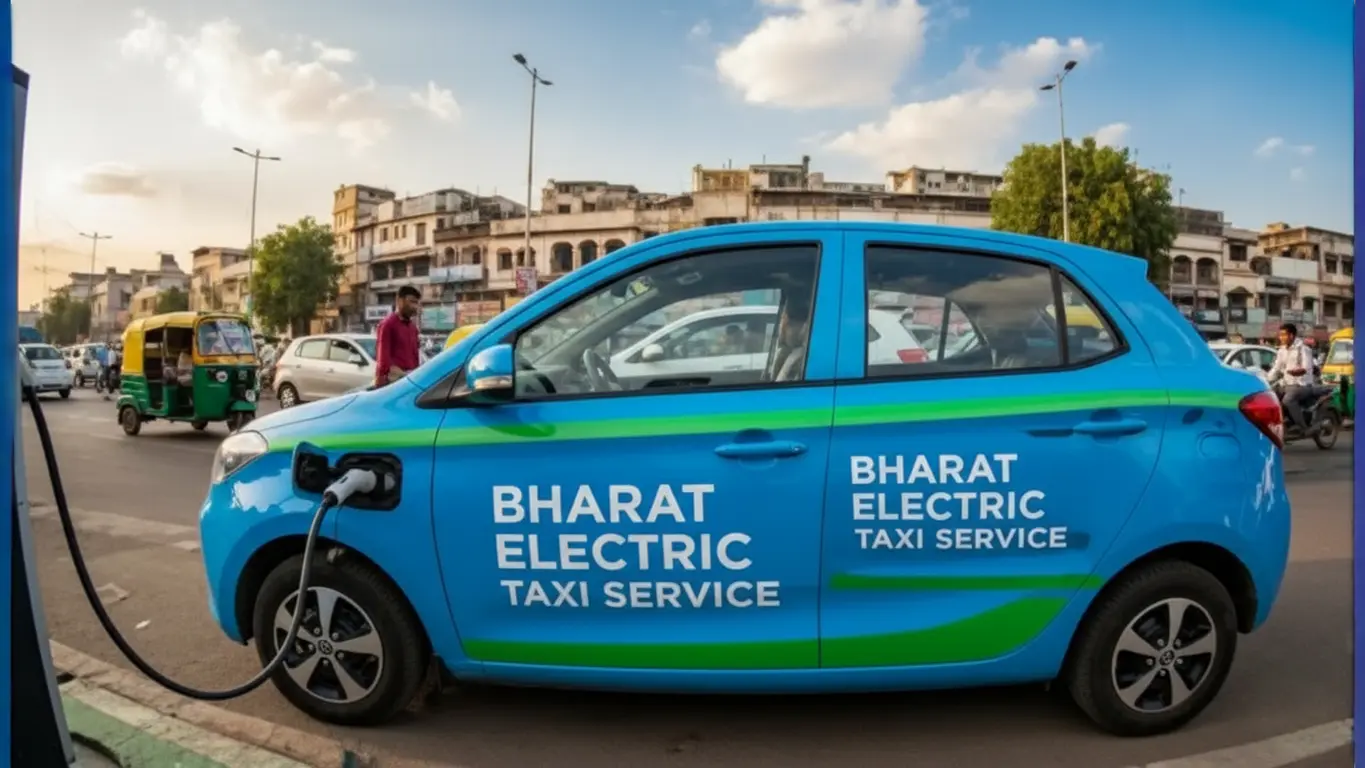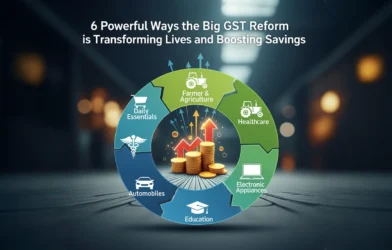Author: Dev Patel | EQMint | General News
India has taken a bold step toward redefining its ride-hailing ecosystem with the official launch of Bharat Taxi, the country’s first government-supported, driver-owned cooperative cab platform. Designed to empower drivers and foster fair competition, Bharat Taxi operates on a commission-free model, setting it apart from private giants like Ola and Uber that currently dominate the Indian mobility market.
The initiative, which will begin its pilot phase in Delhi this November, is expected to expand to over 20 cities across India in the coming year. By enabling drivers to retain their full earnings and promoting transparent pricing for passengers, Bharat Taxi could emerge as a transformative force in India’s fast-growing digital transportation sector.
A New Chapter in India’s Ride-Hailing Landscape
Over the past decade, ride-hailing has become an integral part of urban transportation in India. Platforms such as Ola and Uber have connected millions of drivers with commuters, offering convenience, accessibility, and real-time app-based booking. However, this growth has also come with its share of controversies — particularly around high commission rates, fluctuating incentives, and driver dissatisfaction.
Bharat Taxi seeks to rewrite this narrative by introducing a cooperative ownership structure. Instead of functioning as a corporate intermediary taking a large percentage of every fare, Bharat Taxi will allow drivers to own a stake in the platform and pay only a nominal membership fee. This ensures that profits are distributed equitably and that the drivers — who form the backbone of the service — benefit directly from the platform’s success.
“Bharat Taxi represents a new kind of partnership — one where drivers are not just service providers but stakeholders,” said a senior official from the Ministry of Road Transport during the launch event.
“We’re building a sustainable, fair, and transparent ride ecosystem that serves both passengers and drivers equally.”
How the Bharat Taxi Model Works
At its core, Bharat Taxi is built on a cooperative digital platform, developed with government backing and supported by India’s growing fintech and smart mobility infrastructure.
Drivers who join Bharat Taxi will own their earnings in full, as there will be no commission deductions per ride — a major pain point in existing aggregator models. Instead, they will pay a small periodic membership or maintenance fee, ensuring the platform remains self-sustaining while avoiding exploitative commission structures.
The platform’s features include:
- App-based ride booking and real-time tracking
- Digital payment integration via UPI, debit cards, and e-wallets
- AI-driven route optimization for faster, more fuel-efficient travel
- Transparent fare calculation based on distance and demand
- Enhanced driver and passenger safety protocols
This structure is designed not only to support fair driver income but also to deliver affordable fares and better service reliability to customers — something that’s often compromised under existing models.
Pilot Launch and Expansion Plans
The government has confirmed that Delhi will be the first city to host the Bharat Taxi pilot program, set to begin operations in November 2025. During this phase, around 5,000 drivers are expected to participate, testing the app’s performance, backend systems, and customer feedback mechanisms.
After successful completion of the pilot, Bharat Taxi plans to expand to 20 cities, including Mumbai, Bengaluru, Chennai, Kolkata, Hyderabad, Ahmedabad, and Pune. The full rollout could bring tens of thousands of drivers under a unified cooperative framework within a year.
Officials have also hinted that Bharat Taxi may eventually integrate with state transport services and metro systems, offering multimodal trip planning and last-mile connectivity solutions.
“The vision is not just to compete with existing platforms,” said project advisor Neeraj Bhatnagar.
“It’s to create a sustainable, community-driven alternative that restores balance in the mobility economy.”
Driver Empowerment at the Heart of the Initiative
One of Bharat Taxi’s most promising aspects is its driver-first approach. By eliminating commissions that often reach up to 25–30% of every ride on private platforms, Bharat Taxi ensures that drivers keep nearly all of what they earn.
For many, this means higher take-home pay, predictable income, and greater dignity at work. The cooperative model also provides drivers with collective bargaining power, giving them a stronger voice in platform policies, pricing, and benefits.
The program will also offer digital literacy workshops, vehicle financing assistance, and insurance coverage, making it more than just a taxi platform — rather, a holistic empowerment ecosystem for India’s driver community.
Challenges Ahead
Despite its strong vision, Bharat Taxi will face several challenges in competing with established players like Ola and Uber, which boast deep market penetration, advanced tech infrastructure, and a massive user base.
Building trust among users and ensuring seamless app performance will be key. Experts also point out that maintaining competitive pricing while scaling sustainably could be tricky without the backing of high-margin commissions.
However, analysts believe that the government’s support and the growing discontent among drivers towards private aggregators could give Bharat Taxi the momentum it needs to carve out its own niche.
“If Bharat Taxi can deliver on both affordability and reliability, it can create a strong value proposition for both riders and drivers,” said transport economist Ruchi Deshmukh.
“In the long term, a cooperative model could even push private aggregators to rethink their business practices.”
A Step Toward Atmanirbhar Mobility
Bharat Taxi aligns closely with the government’s ‘Atmanirbhar Bharat’ (Self-Reliant India) vision — encouraging domestic solutions that promote inclusivity, innovation, and ownership.
By empowering drivers through cooperative structures, the initiative also sets a precedent for how gig economy workers can be integrated into equitable, community-driven systems — a challenge faced across industries like delivery, logistics, and services.
If Bharat Taxi succeeds, it could inspire similar models globally, offering a blueprint for balancing technology-driven efficiency with human-centric fairness.
The Road Ahead
As the pilot launch approaches, all eyes will be on Delhi’s streets this November. The coming months will reveal how effectively Bharat Taxi can scale, sustain driver engagement, and win over commuters accustomed to private app-based rides.
Early response among drivers has been optimistic. Many view Bharat Taxi not just as an app, but as a symbol of independence — a chance to reclaim control over their profession and earnings.
Whether Bharat Taxi can truly disrupt the duopoly of Ola and Uber remains to be seen, but its arrival marks a pivotal moment for India’s mobility sector — one that reimagines the future of transportation through cooperation, fairness, and shared prosperity.
For more such news updates visit EQMint
Disclaimer: This article is based on information available from public sources. It has not been reported by EQMint journalists. EQMint has compiled and presented the content for informational purposes only and does not guarantee its accuracy or completeness. Readers are advised to verify details independently before relying on them.









